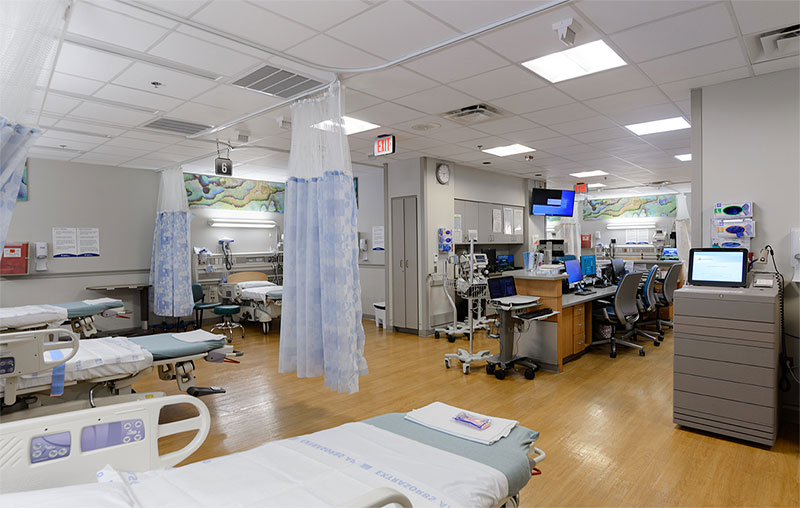A lot of us think we know exactly what happens in a hospital trauma unit because we’ve been watching television shows like “Grey’s Anatomy” for years.
Yes, there is life-and-death drama, split-second decisions and ethical calls.
However, during a recent Facebook Live interview, Dr. Mark Muir, trauma medical director at University Health, said there is only a “kernel of truth” in what you see on the screen.
Recent research comparing the fictional cases on “Grey’s Anatomy” with real ones concluded the same thing. More people died on TV and real life trauma survivors are not discharged from the hospital as quickly.
Dr. Muir said TV simplifications lead to misconceptions. One of them – that the emergency department and the trauma unit are one in the same
ER vs. trauma – what’s the difference?
Dr. Muir explained that at University Hospital, when the ambulance pulls up under the red and white emergency sign, ER staff usually take charge of patients having heart attacks, fighting flu or overdosing on drugs. They’re equipped to deal with illness and less time-sensitive problems.
In the Trauma Center minutes count.
“(Trauma) is about patients who are severely injured or there’s the potential to be severely injured,” Dr. Muir said.
These patients may have lost a lot of blood, or have damage to major organs and body parts. Victims of shootings, vehicle accidents, dog maulings or severe burns often end up in the trauma bay.
What it means to be a level I trauma center
University Hospital is home to one of the few Level I trauma centers in South Texas, and the only Level I pediatric trauma center in the region.
What does Level I mean?
In a word “resources” –the most sophisticated equipment and experienced professionals. They can respond rapidly to treat the most complicated injuries and mass casualties.
“We’re fortunate we have a full range of specialists. They’re all available immediately or within a half hour and our patients get quite expedited care,” Dr. Muir explained.
In 2018, the trauma team’s training at University Hospital made all the difference when a gunman opened fire at the First Baptist Church in Sutherland Springs 45 miles away.
As emergency workers airlifted shooting victims, trauma doctors and staff stood ready in the operating area. They connected ventilators, stemmed the loss of blood and repaired the life-threatening injuries of five adults and four children. They cared for survivors that day and months afterwards.
What causes most trauma injuries in children?
In 2018, vehicle crashes were the most frequent cause for trauma doctors treating children 16 and under at University Hospital. The lack of proper seat restraints is still a contributing factor, and a reason the trauma department’s injury prevention staff hosts events to educate parents.
For the youngest children under the age of four, falls and burns topped the list.
Dr. Muir says the trauma center sees children with severe burns from hot liquids, stoves, fireplaces and engines.
“(They’re) children who wouldn’t have reason to know any better, exploring their world and not realizing things are hot and dangerous,” he said.
Top trauma injuries for adults
Falls ranked first for sending the most adults to the trauma center. Dr. Muir says the danger is greatest for adults 45 and older who are more likely to lose their balance, break bones or hit their heads.
Advancing trauma treatment with whole blood
As part of a Level I trauma center, University Hospital’s staff take part in clinical trials and look for cutting-edge treatments. Dr. Muir says one of the most exciting advancements is the increased use of whole blood.
For many years paramedics and trauma teams have typically stabilized bleeding patients by giving them saline solutions or blood components – platelets, plasma and packed red blood cells.
Though storage of components is easier and thought to be less wasteful, patients often recover more quickly when they receive whole blood transfusions early. Improved storage techniques are now making whole blood more available.
“It’s really just an exciting advancement, and San Antonio and our region is one of the leaders in the country in that area,” Dr. Muir said.
If you are still uncertain about whether a medical situation calls for emergency or trauma care, don’t worry. Professionals at the ER will sort that out. What you do need to know are the symptoms that signal the need for immediate attention. Here are 12 important warning signs.




